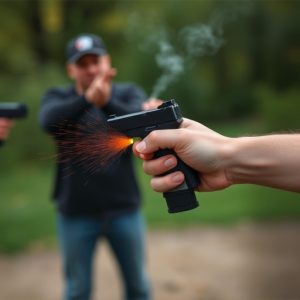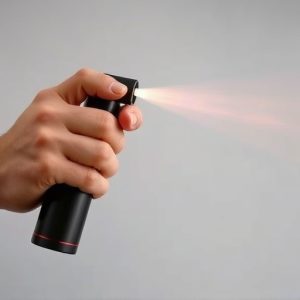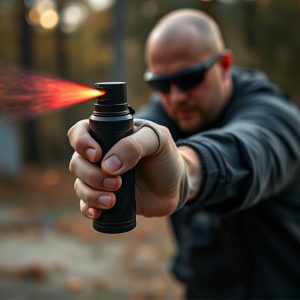Mastering Pepper Spray Neutralization on the Face for Crowd Control
Pepper spray, a potent crowd control agent, temporarily disables individuals through capsaicin, the…….
Pepper spray, a potent crowd control agent, temporarily disables individuals through capsaicin, the heat-giving compound in chili peppers, targeting their nervous system and respiratory systems. To neutralize pepper spray on the face, immediately seek a safe location, wash with water for at least 15 minutes, and consider eye irrigation if irritation persists. Police use strategic deployment and de-escalation techniques to ensure safe use during crowd control, focusing on neutralizing pepper spray on the face while protecting both officers and bystanders. If confronted, protect your eyes and face, move to an area with fresh air, flush with water for 15 minutes, remove contaminated clothing, and rinse before putting on fresh attire.
In recent years, pepper spray has emerged as a controversial yet indispensable tool in police crowd control tactics. This article delves into the complex world of pepper spray, exploring its composition, effects, and responsible use by law enforcement. We discuss effective strategies for police to manage crowds while minimizing harm. Additionally, we provide practical techniques for neutralizing pepper spray on the face, emphasizing essential precautions for those caught in such situations.
- Understanding Pepper Spray: Its Composition and Effects
- Police Strategies for Responsible Pepper Spray Crowd Control
- Neutralizing Pepper Spray on the Face: Techniques and Precautions
Understanding Pepper Spray: Its Composition and Effects
Pepper spray, a powerful crowd control tool, is a chemical compound designed to temporarily disable and disrupt individuals. Its primary active ingredient is capsaicin, the same compound that gives chili peppers their heat. This irritant affects the nervous system, specifically targeting the eyes, nose, and respiratory system. When pepper spray comes into contact with these areas, it triggers a burning sensation, reduced visibility, and difficulty breathing, thereby neutralizing the target’s ability to continue aggressive behavior.
The composition of pepper spray varies by brand and strength, but it’s crucial for individuals facing its effects to understand that there is no safe amount. Upon exposure, the eyes typically become watery and irritated, while the nose may feel congested or burn. Inhaling pepper spray can lead to coughing fits, difficulty breathing, and even panic attacks in severe cases. To neutralize pepper spray on the face, one should immediately seek a safe location, wash their face with water for at least 15 minutes, and consider using eye irrigation if eye irritation persists.
Police Strategies for Responsible Pepper Spray Crowd Control
When facing large crowds, police often employ pepper spray as a crowd control measure to maintain order and public safety. However, responsible use is paramount, as pepper spray can cause significant discomfort and even injury if not handled correctly. Police are trained to strategically deploy the spray, aiming for the eyes, face, and upper body of agitators or ringleaders within the crowd. This precise targeting ensures the agent is neutralized on the target area, minimizing its impact on bystanders and non-threatening individuals.
To ensure safety during these situations, officers follow strict protocols, including wearing protective gear like goggles and respirators to shield against any accidental inhalation or splatter. They also maintain a safe distance from the crowd, allowing for controlled deployment while minimizing risk. Additionally, police are trained in de-escalation techniques, utilizing verbal commands and other non-lethal methods before resorting to pepper spray as a last resort.
Neutralizing Pepper Spray on the Face: Techniques and Precautions
When faced with pepper spray during crowd control, neutralizing it on your face quickly becomes a matter of safety and comfort. The first step is to protect your eyes by shutting them tightly and covering your face with your hands or any available garment. This can help minimize the direct impact of the spray.
After initial protection, seek immediate relief by moving to an area where fresh air circulates. Splash water on your face from a nearby source to dilute the pepper spray residue. Rubbing your eyes or face should be avoided as it might exacerbate irritation. Instead, focus on flushing out the affected areas with copious amounts of clean water for at least 15 minutes. If clothing is contaminated, remove them and rinse thoroughly before wearing fresh attire.
In conclusion, understanding pepper spray, its composition, and effects is paramount for both law enforcement and individuals seeking to mitigate its impact. Police strategies for responsible crowd control, coupled with effective techniques to neutralize pepper spray on the face, underscore the importance of knowledge and preparation in managing this potent tool. By adhering to precautions and learning these neutralizing methods, you can minimize the discomfort associated with pepper spray exposure.


